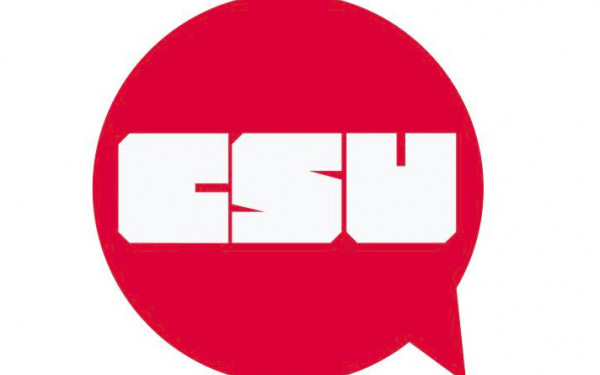‘There Is No Perfect Solution But It Will Be the Best Solution’
CSU VP Answers Questions about Student Union Building
A week before the $50 million student union building, the largest project in the Concordia Student Union’s history, is presented to students by referendum, The Link sat down with CSU VP External & Projects Adrien Severyns.
Spearheading the project since he was sworn in over the summer, Severyns is looking for students to pay an additional 50 cents per credit, increasing to $2.50 over the next five semesters. This will be in addition to the $2.00 per credit students are already paying.
The mystery surrounding the location of the building, the lack of planning for existing student space and the cost of the student union building has made the $4.50 per credit project one of the most controversial portfolios at the CSU.
The Link: I’ve noticed the clear lack of a ‘No’ campaign.
Severyns: To my surprise there isn’t a No Campaign. Let me be honest with you, that’s pretty sad. I was expecting a No Campaign and I would have liked a No Campaign. I know some people have concerns, but it reveals the level of apathy there is.
You had to fight to get the question approved by CSU Council, where some councillors said they felt the wording of the question was disingenuous and misleading. How did you feel about the whole process?
I thought it was great. The question itself represents the complexity of the project, it is a very complex project, we are talking about a building that will be downtown and is worth a lot.
We took a very fair approach, I wasn’t comfortable taking $2.50 straight to students. The only concern that was brought up and isn’t in the question is the total of $4.50.
The question isn’t about the $4.50 or the existing $2.00. Even the CEO refused to include it.
By not including the total, does this set a precedent?
The staggering of the fee makes this different. After talking with members of the administration, I came up with the idea and the calculation that it won’t make a difference in terms of the realization of the project.
Concordia has a long history of student centre controversy. A previous referendum to buy the Faubourg Building as a student centre failed. The CSU at the time blamed it on the location. Why aren’t you telling students the location of the building this time around?
We are currently looking at three to four different options. In respect for the people we are negotiating with and in respect for students we want to keep the price low.
I thought that you had announced earlier in the year that you had selected a location?
Oh no, we have selected a number of options. They are around this area. We want to make it very student friendly and, trust me, these locations are prime locations for a student centre. In terms of real estate, price fluctuations, it is hard to advertise a location.
As soon as this referendum passes, we will announce a location that is interesting for students.
Can you announce the three or four locations?
I can’t for the reason I just said. It is very hard to run this campaign. This is a dream students want, but giving them a visual is a challenge.
I’m not quite sure what the reason is?
The options we have looked at, the prices have been advertised and then they have gone up tremendously. When we entered negotiations, we signed a contract that stated we couldn’t disclose the locations.
So this is a contract?
There is a contract with the people we are talking to. Out of respect for the people we are negotiating with, it wouldn’t be fair right now to reveal the location.
So the contract stipulates you can’t reveal the location?
Yes.
The people you are negotiating with want to keep it secret?
Out of respect for students. It wouldn’t be in the best interest of students to reveal the options we have.
The different options we have won’t make a big difference as to where it is. It won’t make a big difference. But in terms of having the best price, we have to stay discreet.
Can you tell me how much money is available to renovate the space?
If the referendum passes, we are fine, we are absolutely fine for years to come.
Several student groups on campus have already been warned by the administration that once a student centre opens they will get the boot. What plan do you have for these groups?
The CSU represents all undergraduates on campus and it is our duty to take care of these groups. Groups that have these issues will be taken care of to the best of our capacity.
What has the administration told you?
It’s very unclear. They have five definitions for student space. But I think the student centre is there to provide services like a public kitchen, so these groups don’t have to worry.
One of the reasons why these groups collect a fee levy is to be independent from the CSU. It might be politically impossible for some of these groups to have the CSU as their landlord. What will you do for them?
I don’t really like the term landlord because these groups wont be paying the CSU for allocated space. Currently we are always at risk of being ejected from our offices. Three to four weeks ago three of our clubs were told to leave their offices. The CSU has 60 clubs and only 20 have offices. This is the state of student space on campus. It is very dire.
At the end of the day, it is the choice of these groups to stay in their space or move.
But where could they move that is not the student centre?
That is a good question. It is a very, very delicate issue. There is a reduction of student space on campus every year. The issue will only get worse unless students become the ones governing their space.
I don’t think the people who have been fighting for student space for years would see victory in abandoning all university space. You have gotten no concessions from the university?
The student centre will be a means of addressing this issue. There is no perfect solution but it will be the best solution.
To listen to the full interview with Adrien SeverynsClick here
This article originally appeared in Volume 31, Issue 14, published November 16, 2010.

__900_598_90.jpg)
_600_832_s.png)


__600_375_90_s_c1.jpg)
